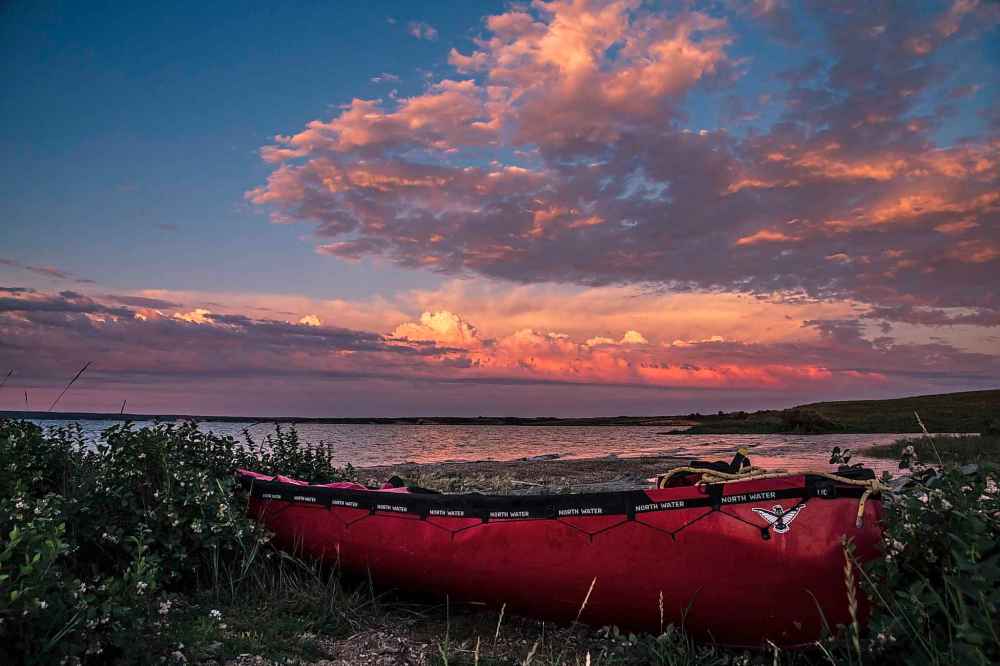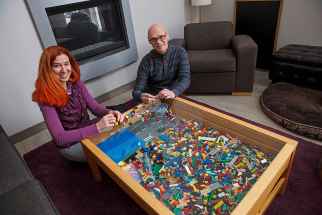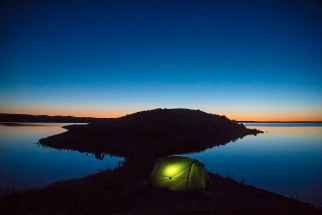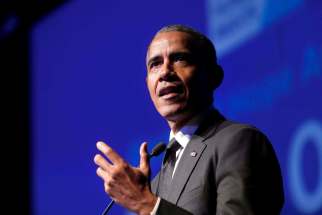Byways and waterways Winnipeg-raised adventurer/photographer chronicles 6,400-km paddling expedition from the Pacific Ocean to southern Louisiana
Read this article for free:
or
Already have an account? Log in here »
To continue reading, please subscribe:
Monthly Digital Subscription
$0 for the first 4 weeks*
- Enjoy unlimited reading on winnipegfreepress.com
- Read the E-Edition, our digital replica newspaper
- Access News Break, our award-winning app
- Play interactive puzzles
*No charge for 4 weeks then price increases to the regular rate of $19.00 plus GST every four weeks. Offer available to new and qualified returning subscribers only. Cancel any time.
Monthly Digital Subscription
$4.75/week*
- Enjoy unlimited reading on winnipegfreepress.com
- Read the E-Edition, our digital replica newspaper
- Access News Break, our award-winning app
- Play interactive puzzles
*Billed as $19 plus GST every four weeks. Cancel any time.
To continue reading, please subscribe:
Add Free Press access to your Brandon Sun subscription for only an additional
$1 for the first 4 weeks*
*Your next subscription payment will increase by $1.00 and you will be charged $16.99 plus GST for four weeks. After four weeks, your payment will increase to $23.99 plus GST every four weeks.
Read unlimited articles for free today:
or
Already have an account? Log in here »
Hey there, time traveller!
This article was published 08/02/2019 (2497 days ago), so information in it may no longer be current.
There are people who live life filled with curiosity and wanderlust in their hearts. Those two traits can lead a person into adventures, challenges and journeys the average person can only dream about. Winnipeg-raised photographer and adventurer Jillian Brown is one such person.
On April 28, 2018, she and fellow Canadian Martin Trahan set out on a 210-day, 7,600-km expedition to paddle across America by canoe, starting from the Pacific coast off Astoria, Ore., and finishing in the Florida Keys.
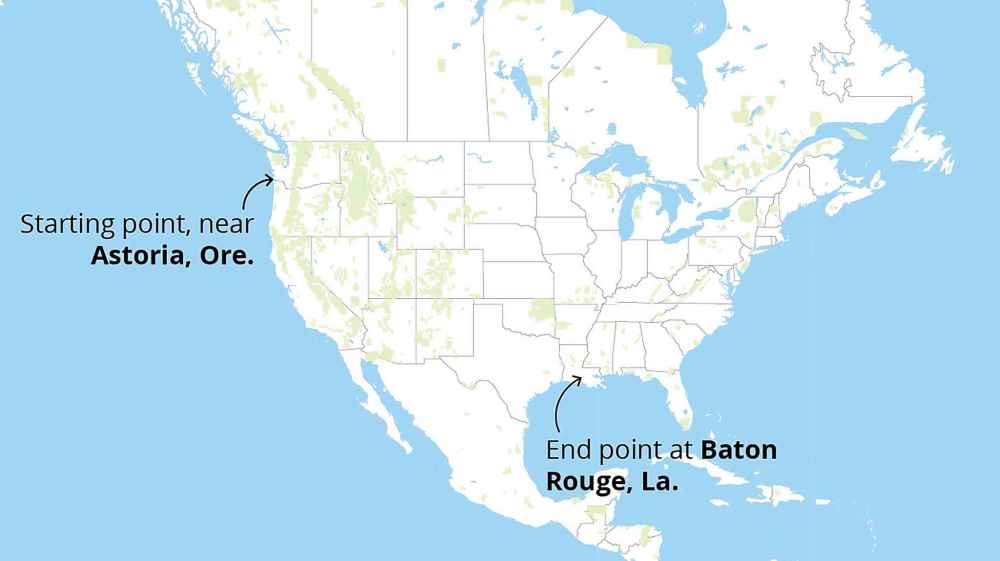
The expedition, dubbed Coursing Through America, was the result of Canoe & Kayak’s 2017 Dream Adventure Contest. It originally started as a four-person team with Trahan as its leader. But due to work complications for members of the original team, Trahan invited Brown, whom he had only known through her own paddling adventures via Instagram, to form a two-person paddling crew to tackle the expedition. They met in person for the first time three days before the start of the trip.
But 104 days into the journey, the Canadian duo parted ways to continue the expedition on their own. She arranged to have a kayak waiting for her in St. Louis and carried on travelling down the Mississippi River. Trahan followed the Atchafalaya River.
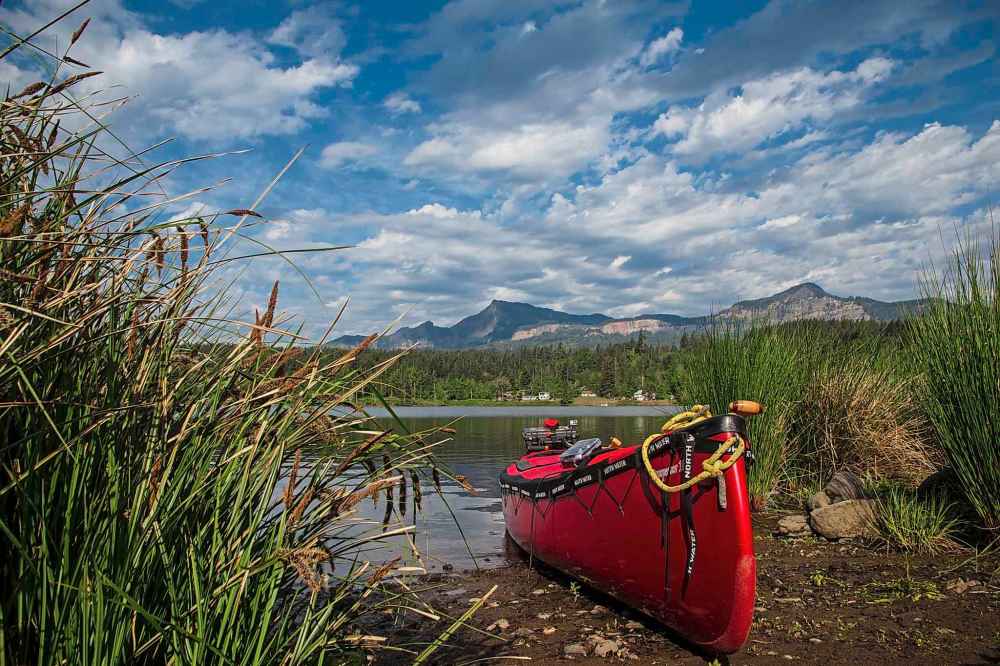
The Squamish, B.C. resident had been hit with heavy rain and bad weather on her way to Baton Rouge, La. At the beginning of October, a week before hurricane Michael hit the area, Brown finally pulled off the river in Baton Rouge to wait out a storm. Left with no radio, no GPS and an almost dead cellphone and a soggy paper map, she called a friend back in Squamish that evening. They talked about the toll it was taking on her mental health and the risks to her personal safety if she continued the expedition solo.
After 150 days, paddling through 16 states and accumulating more than 6,400 km, she decided to end her journey and made her way back to Winnipeg.
But the experience hasn’t deterred her from eventually completing the expedition and under better circumstances.
“I have plans to return and paddle to Miami, however, under my own terms, with equipment that will keep me safe,” she said via email. “It has been a goal of mine to paddle the Gulf and the Everglades since I was young, and I do not want to go into such a beautiful place with any negativity attached to it.”
Brown shared her expedition experience with the Free Press in this Q&A. Additional images from the trip can be found on her Instagram account. The interview has been edited for length and clarity.
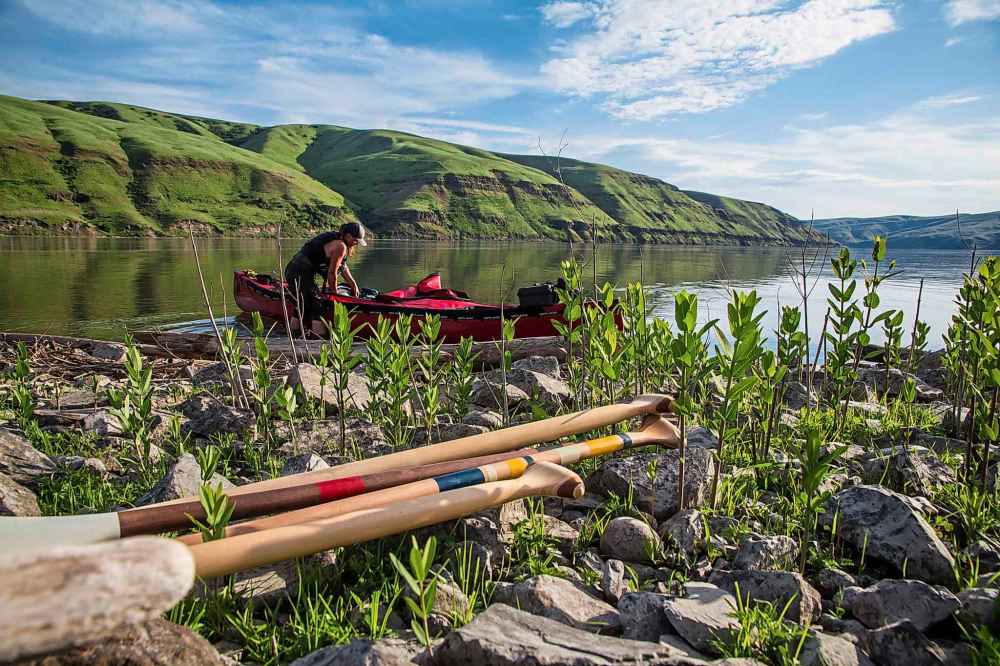
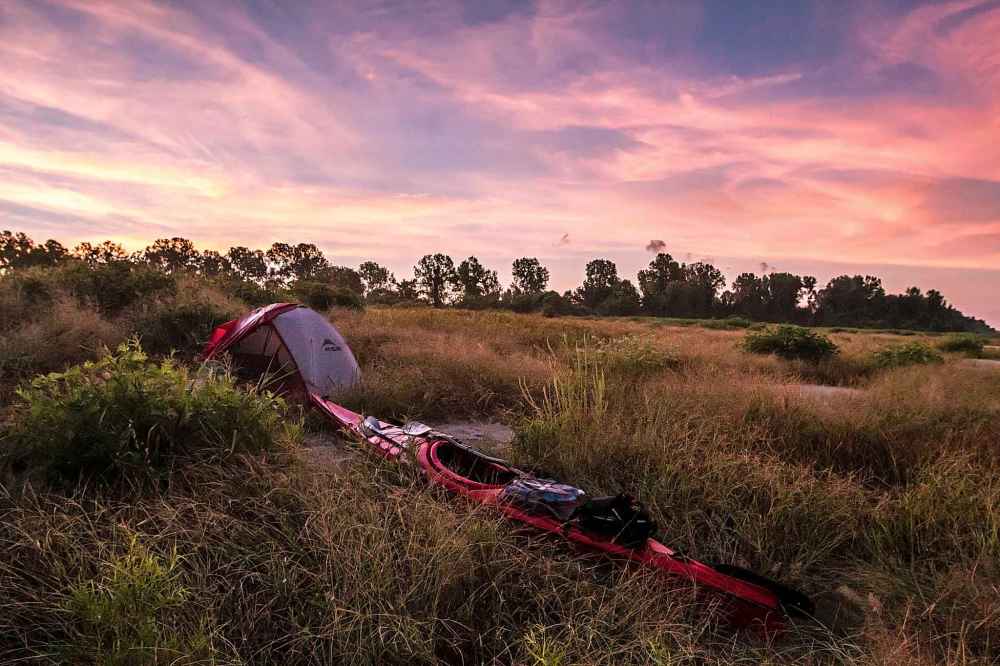
When you started out on this expedition, did you have any expectations about the trip and how different were those expectations compared to the actual experience?
I honestly went in with the only expectation of working hard each day. I didn’t look much into the ecology or geography of the rivers I was to be paddling through. I wanted to experience everything like it was new and unexpected each day. I was not disappointed. There was an incredible beauty around every turn: From the dense, giant cedars and huge gorge of the Columbia River, to the high deserts along the Snake River, to then experience a blizzard while hiking over the Great Divide among the subtle mountains, then on to the Missouri River and some of the world’s largest reservoirs, which were surrounded by stark, rounded hills, offering endless views and hiking. The Mississippi, lush and the feeling of a tropical environment slowly creeped in.
In an Instagram post, you spoke about paddling past abandoned boats, old docks and collapsing ports. These are things most people don’t see in their everyday travels. What struck you most about them when you came across them?
Most of my travels and expeditions took me to vast and remote places, where you see nothing of previous humans, say perhaps an ancient fire ring. Here, though, there was rarely a place that felt completely wild. These ships and docks were along the Columbia River, which actually holds floating communities. It was one of the biggest challenges of the trip, having to paddle around almost mile-long chains of houses. We would be forced out into the strong currents and have to use every ounce of strength to paddle against it. The old boats, tethered to the shores, had me often trying to envision their story. Most would have hauled logs or were old pilot boats, retired and left to be overtaken by nature.
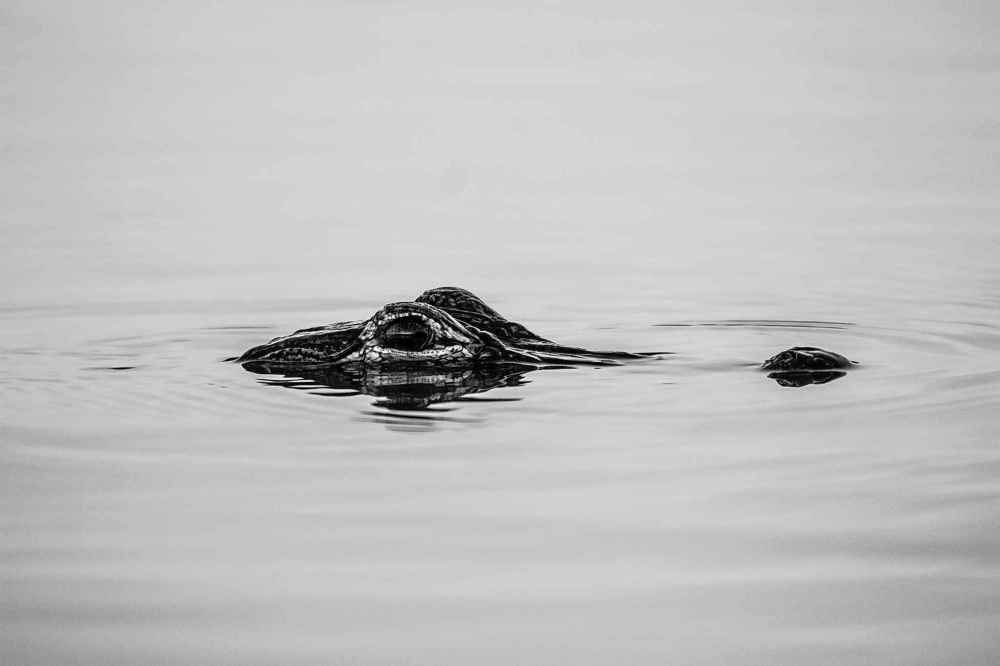


At the start of the journey, you spoke about paddling with sea lions along the coast of Astoria, Ore. What other wildlife did you get to see? Were you ever in danger of crossing paths with predators such as wolves or bears?
It seemed as though I encountered many of each of the regions’ creatures. From the five rattlesnake encounters, the first two were at our last camp on the Columbia River, where we found ourselves standing atop the log it was under, and which our canoe sat on. The next was during a portage around the first dam of the Snake River and I just about stepped on it. In the canyons of the Snake River, I spotted 12 owls nesting in the cracks and caves along the river. I watched the invasive Asian Carp jump out of the water and smack the sides of other boats and my kayak.
Along the Mississippi, camped out on an island, I woke to the snorts and grunts of a boar outside my tent. I froze with fear, not knowing how to react. Eventually, it wandered off and I fell back asleep, to then wake up to fresh otter tracks running past, and an alligator sitting in the water before me. I then joined it for a swim. Around this time, I had spoken to a few locals about the wildlife to watch out for — snakes, alligators, boars and bears. Something I had not even considered that deep in the South. The next day as I pulled in to shore, there were fresh bear tracks in the moist mud.
There were days where you and Martin were just portaging. What was the longest distance you had to portage from one waterway to another?
The portage over the Great Divide took 20 days and was roughly 675 km.
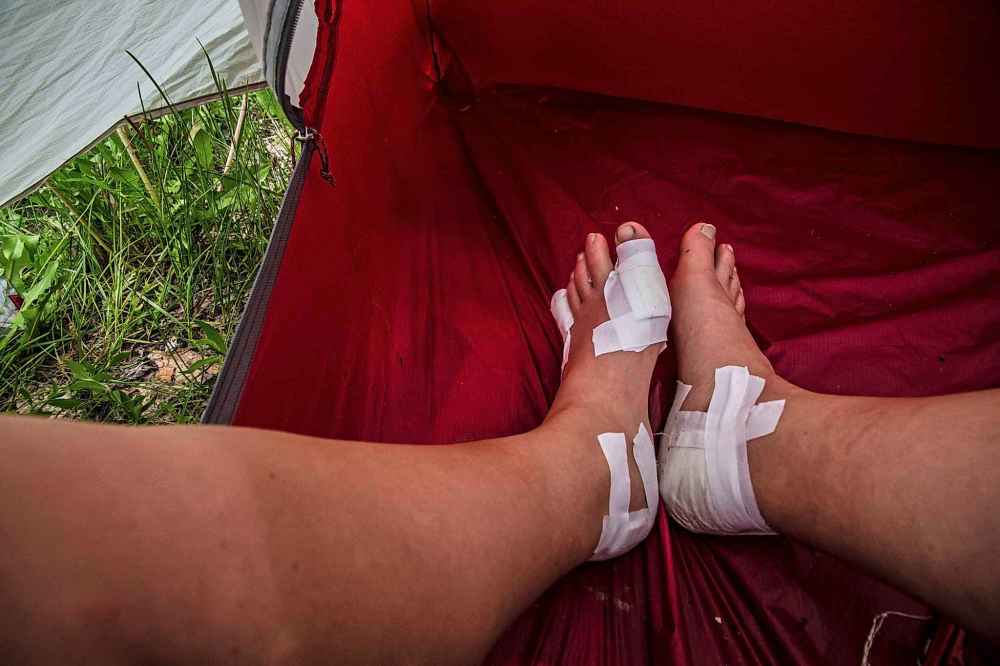
In the first leg of your journey, you broke your right foot. Did you need to wear a special boot or cast? How did you manage the trip during that time?
It was the second day of the portage over the Continental Divide when I felt the pain shooting up my leg. I knew what had happened and that a doctor would tell me not to walk on it. Well, that wasn’t about to happen, so I pushed on. With the swelling in my right foot and the overuse of my left, they both swelled and created tremendous blisters that eventually became infected from the rubbing. On Day 16 of the portage, I could no longer get my boots on due to the swelling and I was forced to begin hitchhiking from camp to camp. It was more the blisters than the break that were the concern, knowing I would soon be sitting in the canoe again, the break could heal. But the blister would be open to the polluted water of the Missouri and the potential for illness was a worry.
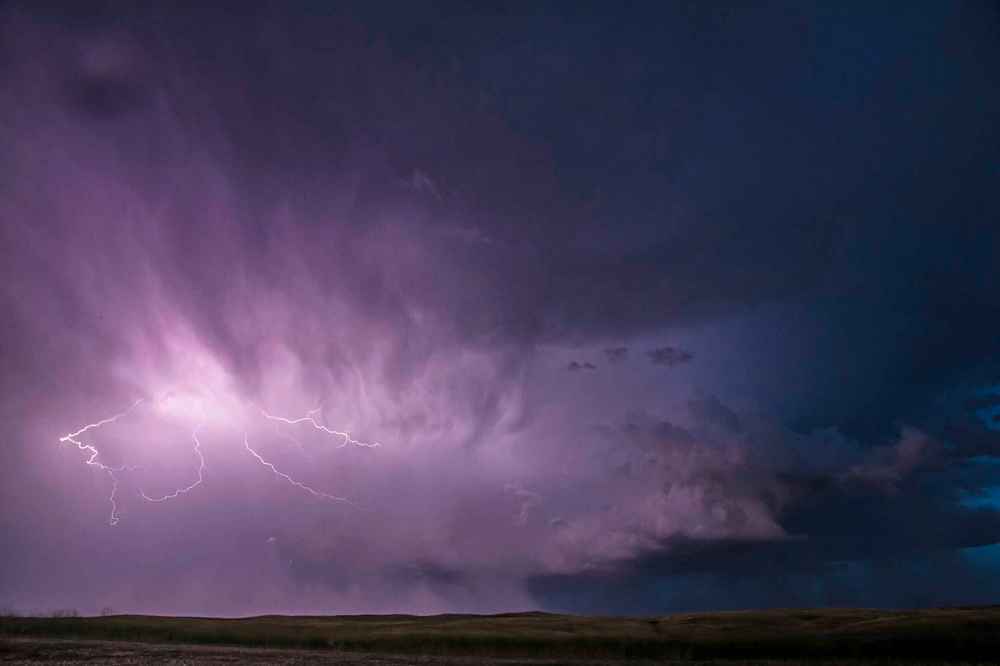
Weather can be unpredictable. I read there was a time where you and Martin had to take cover from a tornado. Was that the most intense weather-related situation you encountered during the expedition?
Along the lakes of the Missouri, we had a number of encounters with massive storm cells that held tornadoes, but we were always fortunate to only be skimmed. I faced the worst weather once I went south. Daily, I was hit with storms containing winds and heavy rains. One morning, the rain pounded and, after a couple of hours of running back and forth from the tent to the boat to load up, I scrambled during a break and made it across the river from the tiny island when another storm slammed into me. There was a huge crash of thunder as I looked back at the island and lightning struck it.
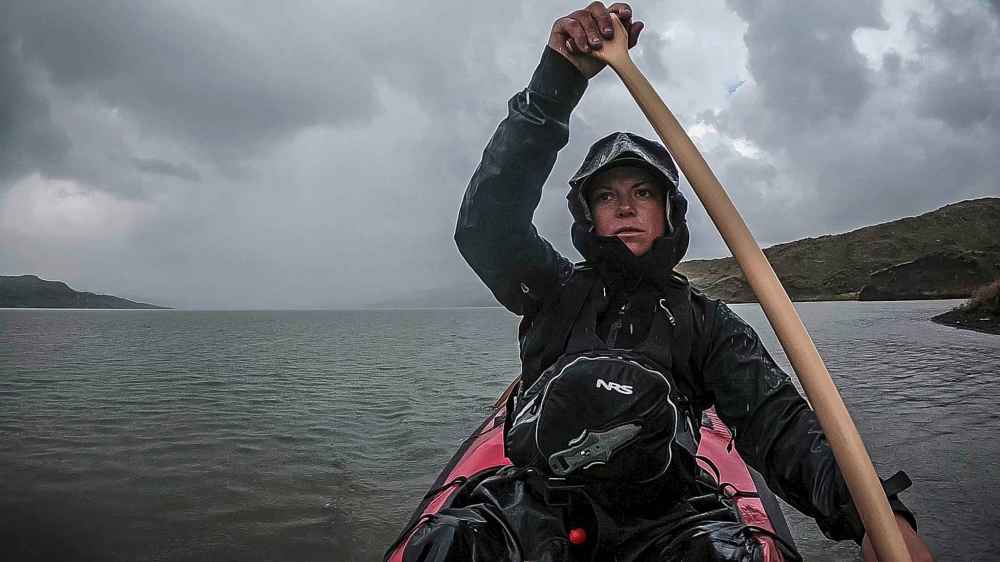
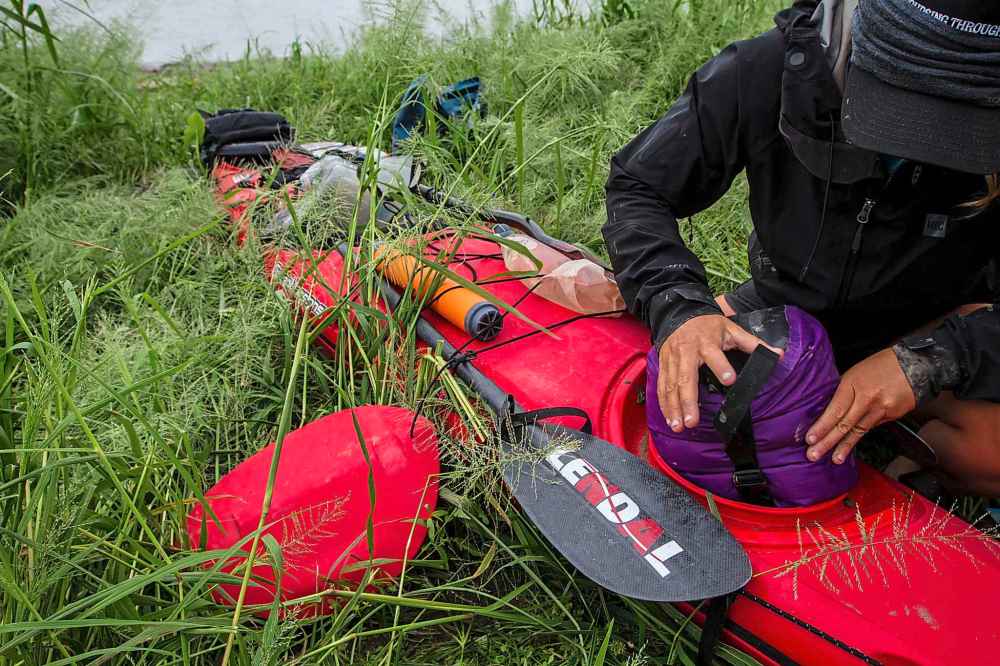
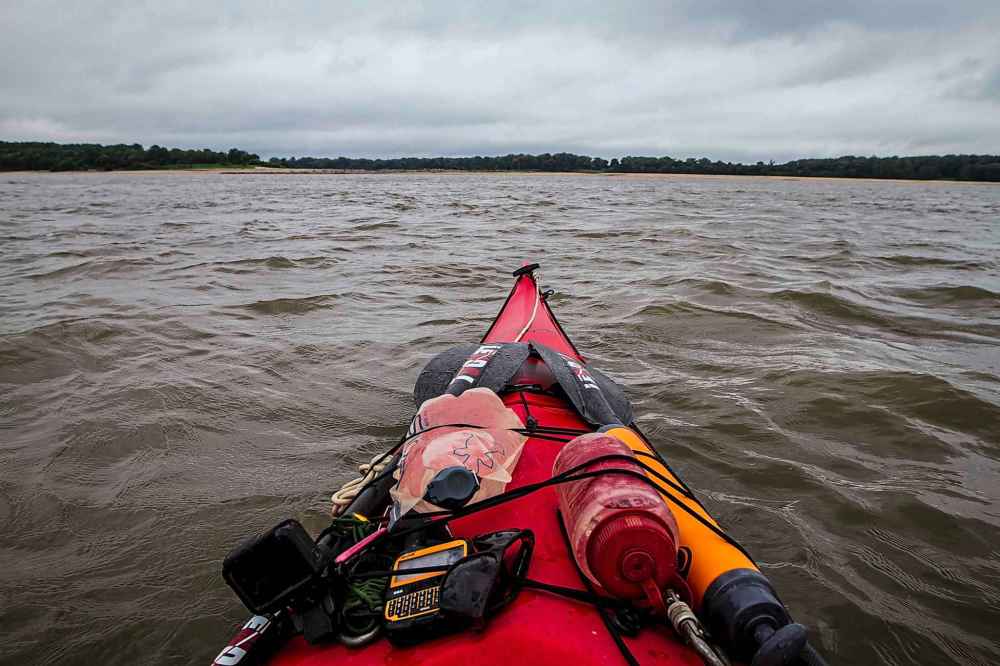
About five months into the expedition, you and Martin agreed to part ways and continue on your own separate journeys. You switched from travelling by canoe to travelling by kayak. What were the differences between travelling with a partner and travelling solo?
I wish it had been an agreed-upon split; it was a forced-upon one for me, which is never the way to go into a solo expedition.
From my experiences in the wild, on adventures and expeditions throughout my life, I have learned about the importance of headspace going into one. Going in to any trip with a partner, there is a different feeling of safety. You have another person to bounce ideas off of. Work is spread between the two. There is someone to talk to and to just have another presence there. There is the knowledge of someone to protect you and vice versa. If you are having a down day, the other is there to help pick you up.
While on a solo trip, you need to go in full force mentally. You are the sole person responsible for every decision, in motivating yourself and making yourself feel safe. You are the only company you share space with, so you must enjoy that person. You must trust yourself wholeheartedly in the toughest of scenarios when everything seems to be going wrong.
Solo trips are one thing that should never be forced. Both, though, offer growth — learning teamwork and leadership, sharing and helping another when there is more than one. With solo, you learn all that you have within. Truly all the strength, the courage, the positivity and the glimpses into the negativity, too.

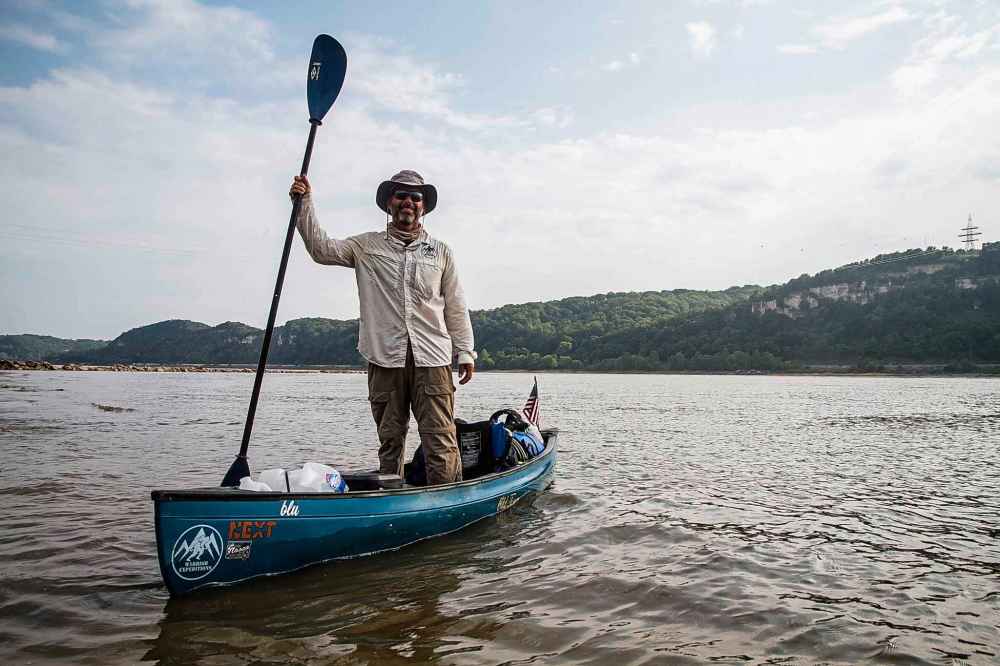
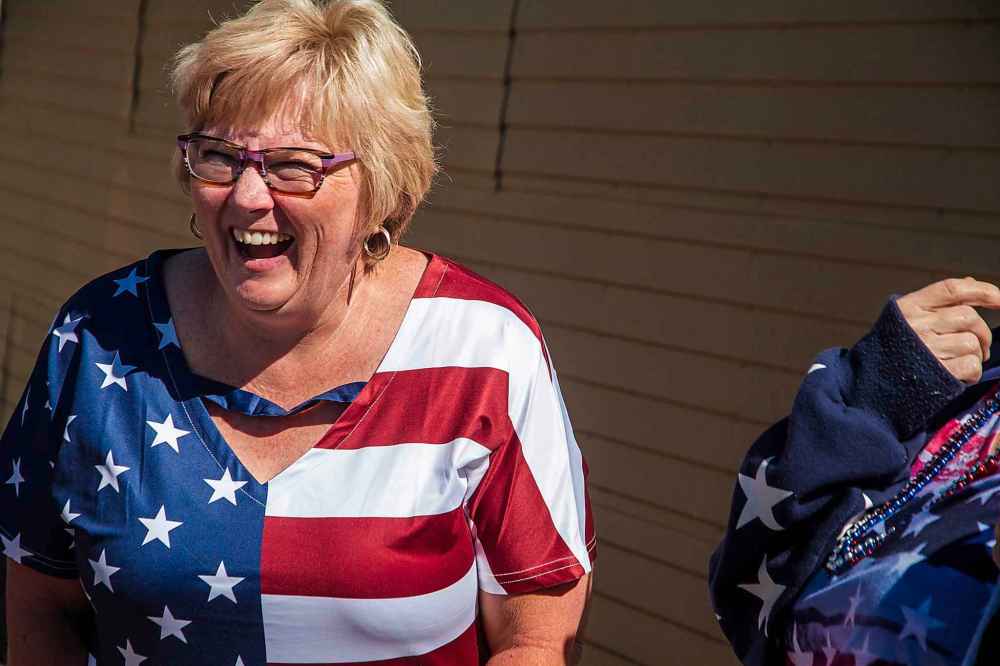
What are two or three of your most memorable moments from this journey? And what did you learn about yourself and the people you met during your trip across America?
I would have to say what resonates most from the trip, was every person I encountered. The stigma of social media, the news and just what we were taught of how to perceive people in America had me curious at the start about what kind of encounters I may have. Every single soul was kind, overwhelmingly generous, shared laughter and love with me; opening their homes to this Canadian stranger, willing to drive some hours to support me.
They each told stories of their life along the rivers and taught me about local history and culture. They gave me advice, some shared tears, and all shared many hugs. I went in with a stranger, and although he and I parted still feeling that way, I can easily say, I arrived back to Canada with an incredible new family that stretches the length of each river, from Astoria, Ore., through to Baton Rouge, La. That, and swimming with an alligator while an egret watched inquisitively.
As for myself, I learned so much about my tolerance and my breaking points. I think the biggest thing for me was learning again about when to take care of yourself, physically and mentally.
Making that decision to leave the river in Baton Rouge was the hardest moment of the trip. Reflecting back now, though, it was the biggest lesson and one I had experienced once before. When you reach that point of no return, where if you push on, the risks outweigh the reward to some degree.
It’s the hardest moment when chasing any dream, to know when to turn back or to stop so you can survive. Not to give up, or quit, I would never use those words, but to return and accomplish the goal when it is safe, when you are healthy, and when you can enjoy it.
Do have any great adventures lined up for the future?
I head to a remote part of Alaska to photograph northern lights in the beginning of February, then to Nepal in April, the remote Kamchatka Peninsula in Russia in August/September to packraft and mountaineer. It is a place that seems almost prehistoric with its immense grizzly population, untouched lands and active volcanoes. There is talk of teaming up to ride a fat-bike across Greenland and Australia, as well as horseback riding across Mongolia.
In most of the expeditions and adventures, I am asked to be a part of on such short notice, to come document or help paddle, that the future is wide open as to what could possibly be thrown my way next. But I can guarantee I will jump at any and all of the opportunities.
kittie.wong@freepress.mb.ca

Kittie Wong wears three different hats for the Winnipeg Free Press editorial department: page designer, picture editor and web editor.
Our newsroom depends on a growing audience of readers to power our journalism. If you are not a paid reader, please consider becoming a subscriber.
Our newsroom depends on its audience of readers to power our journalism. Thank you for your support.

